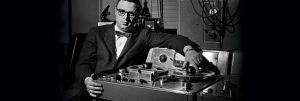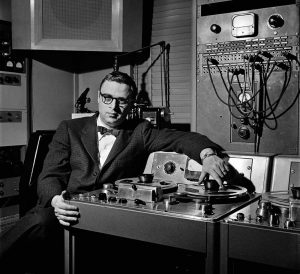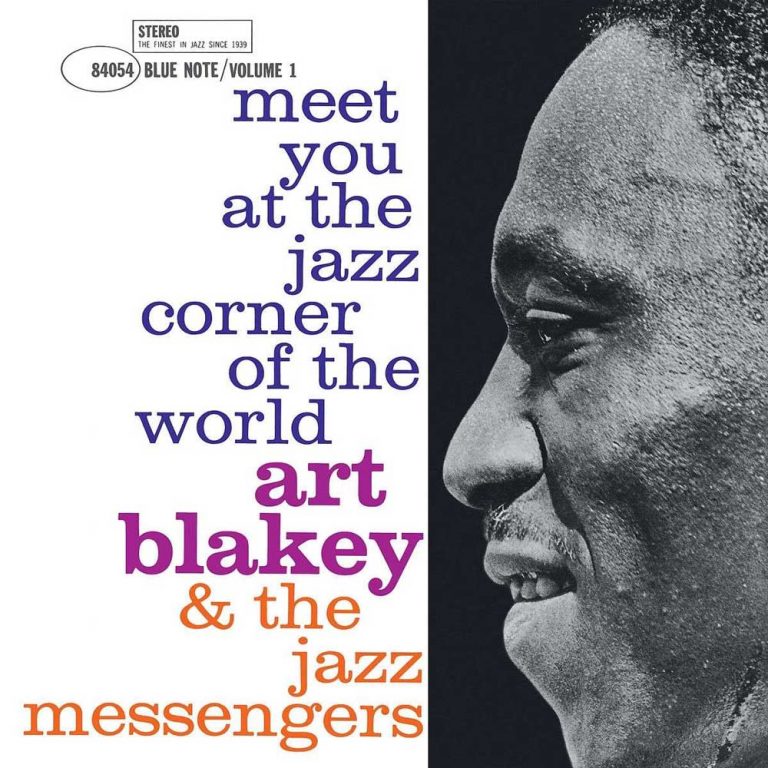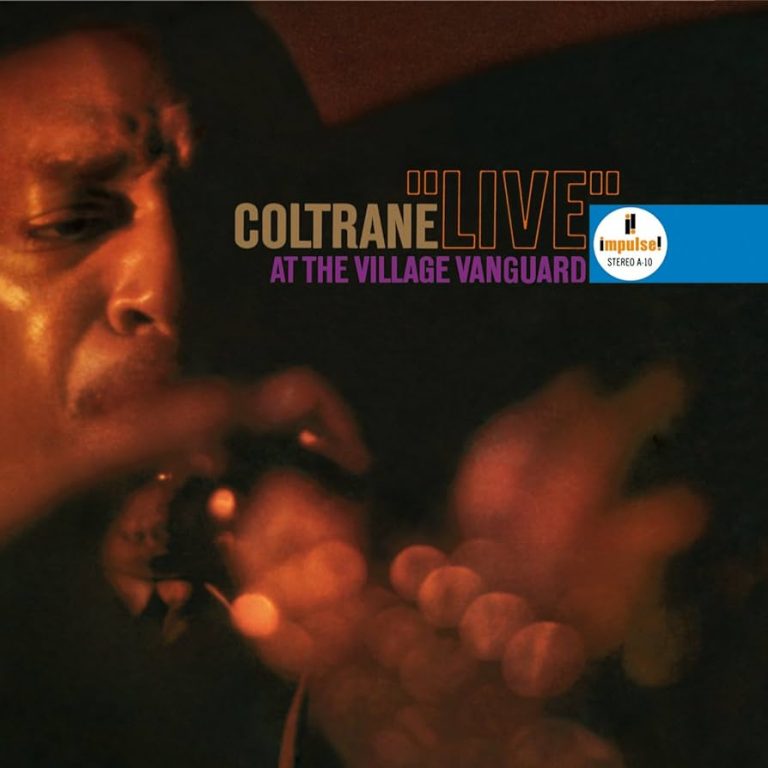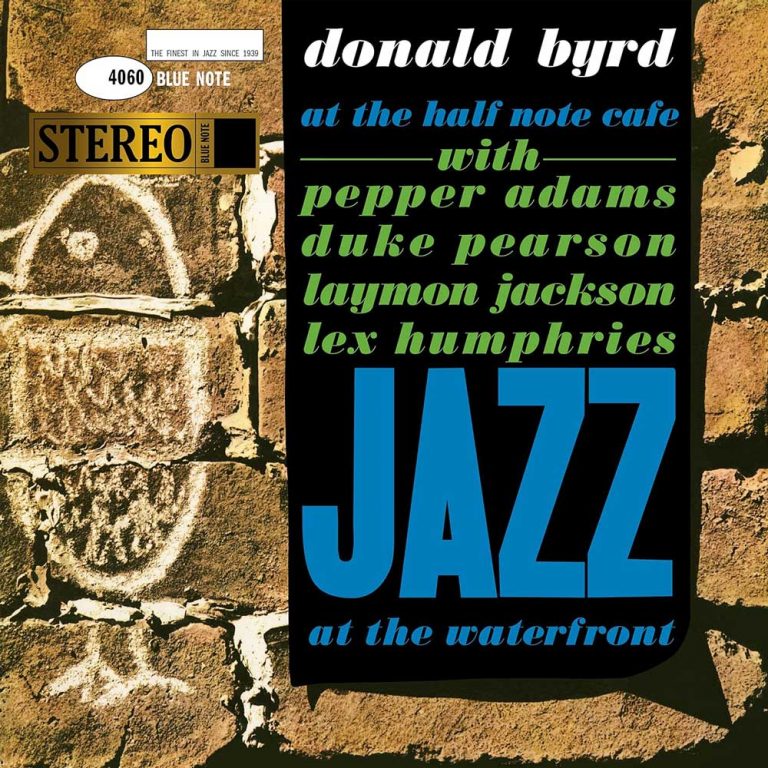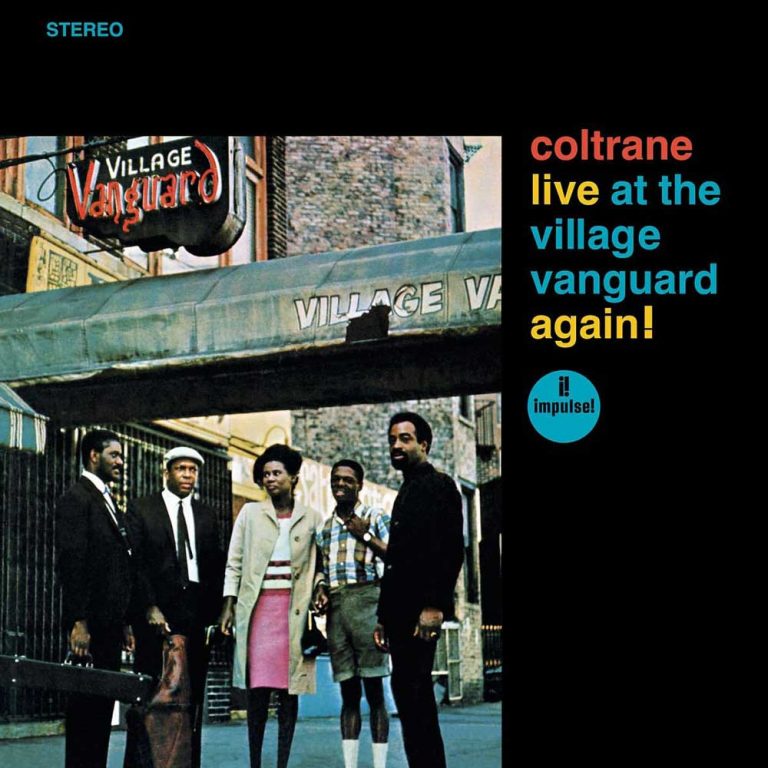While Rudy Van Gelder’s Englewood Cliffs studio in New Jersey was integral to the “Blue Note Sound”, the label’s catalogue also included a range of classic concerts recorded by the legendary engineer.
In fact one of the first albums that got Van Gelder noticed was The Art Blakey Quintet “A Night at Birdland” recorded live at the iconic venue on February 21, 1954 and released a year after his debut for Blue Note.
Critics and jazz musicians were soon talking about the distinctive “Van Gelder Sound” brought to the albums he worked on with producer Alfred Lion.
In July 1959, Van Gelder moved his studio from his parents’ house in Hackensack, New Jersey, to the famous Englewood Cliffs, where architecture, technology and musical inspiration combined. “My goal is to make musicians sound the way they want to be heard… Someone wanted to put a man on the moon, but it was an engineer who got him there,” Van Gelder told the New York Times in 2005.
The aim of Van Gelder, who also engineered renowned sessions for Prestige and Impulse!, was to capture the natural warmth, realism, intimacy and in the moment presence of live jazz in the studio. “Rudy loved the way music sounded live—he’d go home from a concert and feel that records didn’t really sound like the live show. He thought he could make records sound better…by making it closer to the live experience,” producer and Reissue Director of Blue Note, Michael Cuscuna, explained in a 2010 interview in Collectors’ Weekly. So it was only natural that Van Gelder’s live recordings would be given the same care and attention as his studio sessions.
As passionate about live music as he was about the studio, his recordings of jazz concerts transported the listener right in the front row. Recording on location was far from an easy task though. “It would take me three days to record it,” Van Gelder told Jazz Wax magazine in 2012. “I’d have to take apart the studio and pack all the equipment into my car, drive to the venue, set up the equipment, record the musicians, and then break down everything and bring it all back to my studio before my next session.”
Many of these albums were made when these artists were at the peak of their powers, pushing each other to heights often beyond those of the studio sessions, and they offer a fascinating insight into jazz at its most elemental. And who can resist the atmospheric sound of glasses clinking in a jazz basement and the hard earned applause after a killer solo, captured by Van Gelder as if you were actually there.
Here we shine a light on four of the best known live albums Van Gelder worked on for Blue Note and Impulse!

Birdland (AKA Jazz Corner of the World) was the jazz club most associated with Art Blakey partly because of the live albums he recorded there for Blue Note. Regarded as milestones in hard bop, three volumes of “A Night in Birdland” were recorded by his Quintet on February 1 1954. At the time live jazz recordings were uncommon, so Van Gelder’s challenge was to persuade the critics of their worth through the purity of the sound. “The set is very well recorded by Rudy Van Gelder, and is one of the better caught-in-a-club sessions on record,” Nat Hentof somewhat begrudgingly wrote in his Downbeat review. The 10” triple pack was followed by two more live recordings at Birdland “At the Jazz Corner of the World” (Vol 1 & 2) and “Meet You at the Jazz Corner of the World”.
Engineered by Van Gelder to present the live sound as accurately as possible, the latter featured one of the great line ups of The Jazz Messengers with Wayne Shorter on tenor saxophone, Lee Morgan on trumpet, Bobby Timmons on piano, and Jymie Merritt on bass. The recording of the introductions of Birdland’s infamous master of ceremonies MC Pee Wee Marquette helps make the firing hard bop session hugely evocative. You can almost smell the cigar smoke.
“Coltrane had told Bob Thiele, Impulse!’s recording director, that he would like to try recording live because of the added freedom of an on the job performance by contrast with the formal aura of a recording studio,” Nat Hentof recalled in the liner notes to this legendary recording of John Coltrane’s Quintet (featuring the members of his classic quartet with the addition of Eric Dolphy on bass clarinet) at Greenwich Village’s Village Vanguard on November, 2, 3 1961. Coltrane’s first album for Impulse! was also his first live recording and followed Sonny Rollins “A Night At The Village Vanguard” and Bill Evans: “Sunday At The Village Vanguard”.
You can only imagine what it was like to be in that atmospheric basement as the modal might of “Spiritual” echoed around the room. Van Gelder’s quest for live sound would make him the ideal engineer for Coltrane’s subsequent Impulse! sessions with producer Bob Thiele.

The Canterino family’s Midtown venue The Half Note Cafe became an important platform for both emerging and established players. One of those was Donald Byrd, who was into his second year with Blue Note having recorded four previous albums for the label, when he took his quintet (Pepper Adams on baritone saxophone, Duke Pearson on piano, Laymon Jackson on bass, and Lex Humphries on drums) into the Half Note in November 1960.
The evocative hum of the expectant audience on that fall evening 64 years ago segues into the hard bop brilliance of “Jeannine” later sampled by US3 on “Make the Tracks” from their Blue Note album of 1993 “Hand The Torch”. Other albums recorded at The Half Note Cafe included Horace Silver – “Live at the Half Note” (Hi Hat, 1966) and the lost classic John Coltrane –“Live at the Half Note: One Down, One Up”.
“I like the feeling of a club, especially one with an intimate atmosphere like the Vanguard…It’s important to have that real connection with an audience because that is what we’re trying to do – communicate,” Coltrane told Nat Hentof in the liner notes to “Live at the Village Vanguard”.
Although he also recorded a live album for Impulse! at Birdland, it was his two albums at the Village Vanguard that are best known. Recorded on 28 May 1966, “Coltrane Live at the Village Vanguard Again” featured just two numbers “Naima” and “My Favourite Things”. Their complete avant-garde transformation by Coltrane, with fellow tenorist Pharoah Sanders, drummer Rashied Ali, bassist Jimmy Garrison and Alice Coltrane on piano is breathtaking. The only official release by this line-up during Coltrane’s lifetime, it’s one of the greatest live jazz albums and a perfect example of why live jazz recordings matter.
Andy Thomas is a London based writer who has contributed regularly to Straight No Chaser, Wax Poetics, We Jazz, Red Bull Music Academy, and Bandcamp Daily. He has also written liner notes for Strut, Soul Jazz and Brownswood Recordings.
Header image: Rudy Van Gelder. Photo: Francis Wolff / Blue Note Records.

